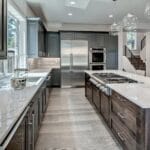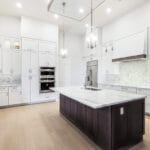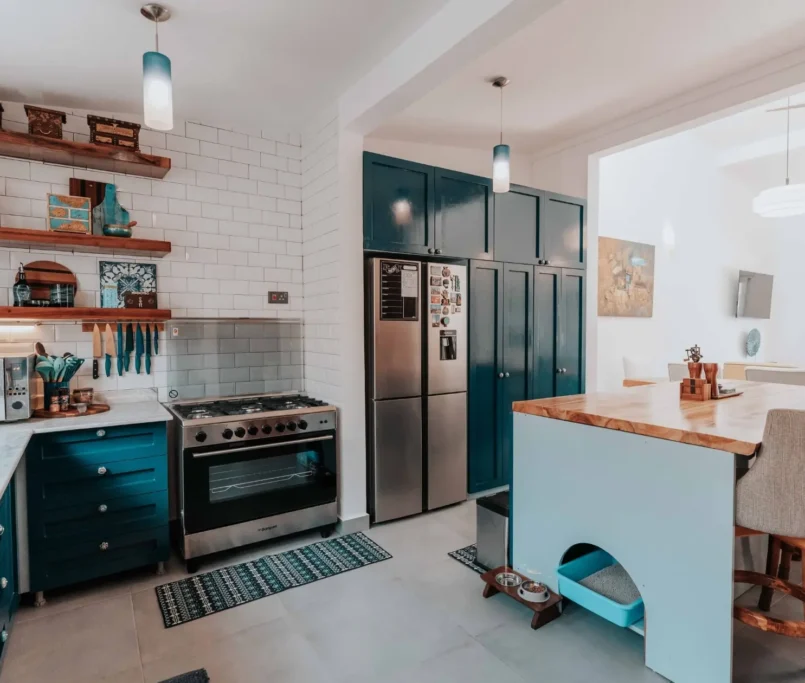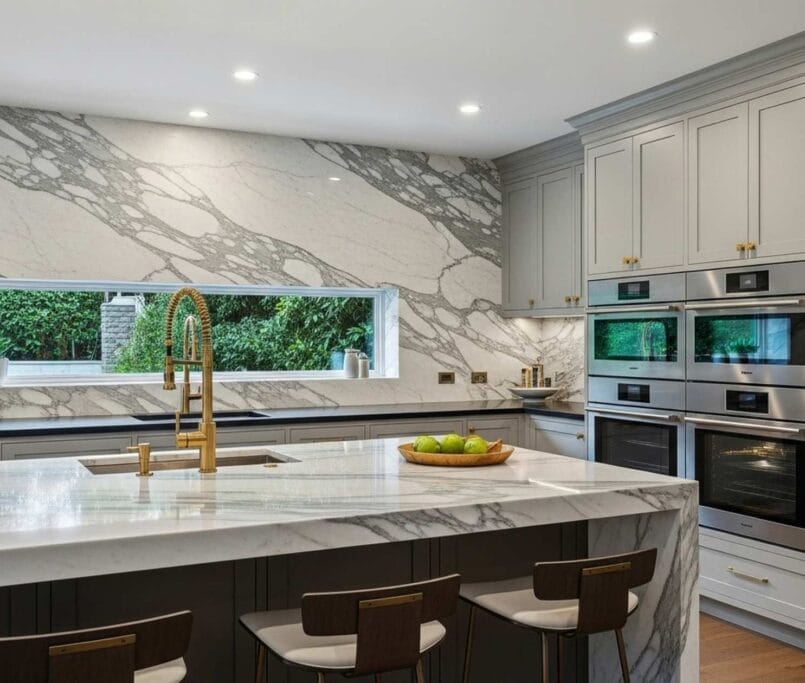Is $10,000 Enough for a Kitchen Remodel? Budget Breakdown & Smart Strategies
A kitchen remodel is one of the most rewarding projects you can take on as a homeowner. It can breathe new life into your entire home, improve daily functionality, and even boost property value. But remodeling is also expensive, often ranging anywhere from $10,000 for basic upgrades to $60,000 or more for full luxury transformations. So the question many homeowners ask is simple: Is $10,000 really enough for a kitchen remodel?
The short answer is yes but only if you approach it strategically. A $10,000 budget places you at the entry level of kitchen renovations. You won’t be knocking down walls, ordering custom cabinetry, or buying a full suite of high-end appliances. But you can absolutely refresh your space with cosmetic improvements, targeted upgrades, and a smarter allocation of funds.
The key is understanding what this budget can cover, where it falls short, and how to maximize every dollar to create meaningful change.
What You Can Accomplish with $10,000
With a $10,000 budget, think of your remodel as a refresh rather than a reinvention. You’re not rebuilding your kitchen from the studs out you’re making thoughtful updates that improve aesthetics and function without changing the bones of the room.
One of the most cost-effective updates is painting your cabinets. Professional cabinet painting typically costs between $2,000 and $4,000, which immediately modernizes a dated kitchen. A fresh coat of crisp white, soft gray, or a bold navy can make your space feel brand new at a fraction of the cost of replacement. Pair that with new cabinet hardware modern pulls and handles often cost $200 to $800 depending on style and you’ve already transformed the overall look for less than half your budget.
Countertops are another area where you can see a big impact without blowing through your funds. Affordable options like butcher block ($40–$70 per square foot installed) or laminate ($25–$50 per square foot installed) can completely change the feel of your kitchen. For a standard 30-square-foot counter space, you’re looking at $1,200 to $2,100, leaving plenty of room for other upgrades.
Lighting also goes a long way. Swapping outdated fixtures for modern pendants or adding recessed lights typically costs between $500 and $1,500. Under-cabinet LED strips, which run $200 to $600 installed, improve both style and functionality by eliminating shadows on prep surfaces.
Finally, flooring can be updated affordably with materials like luxury vinyl plank (LVP), which costs $3–$8 per square foot installed. In a 150-square-foot kitchen, that comes out to $450–$1,200 an upgrade that transforms the entire room.
Taken together, these types of projects painting cabinets, updating hardware, refreshing countertops, adding a backsplash, upgrading lighting, and replacing flooring fit neatly into a $10,000 budget and deliver a kitchen that looks dramatically different without major demolition.
When $10,000 May Not Be Enough
While $10,000 can accomplish a lot, it also comes with serious limitations.
If you have a large kitchen, your budget won’t stretch as far. More square footage means more cabinets, more countertop material, and higher labor costs. What might cover a full refresh in a small kitchen could barely make a dent in a spacious one.
Likewise, if your remodel involves major structural changes, $10,000 won’t be sufficient. Moving walls, rerouting plumbing, or upgrading electrical systems can cost thousands on their own. For example, relocating a sink requires new plumbing lines and permits, often exceeding $2,000–$3,000 before any cosmetic work even begins.
High-end finishes also eat into a $10K budget quickly. Custom cabinetry can easily cost $15,000–$20,000, while stone countertops like quartz or granite average $3,000–$5,000 for mid-range options. Even a single high-end appliance, like a professional-grade range, can consume $5,000 or more by itself.
In other words, $10,000 is enough for surface-level upgrades and moderate refreshes, but not enough for a top-to-bottom transformation.
DIY vs. Professional: Stretching Your Budget
One way to maximize your $10K is by carefully balancing DIY projects and professional services.
If you’re comfortable with home improvement, tasks like painting cabinets, installing hardware, or even laying LVP flooring can be tackled as DIY projects, saving you hundreds or even thousands in labor costs. Many homeowners also successfully install budget-friendly backsplashes themselves, especially peel-and-stick or simple subway tile.
However, some jobs are better left to the pros. Electrical work, plumbing updates, and countertop installation all require skill, precision, and licensing. Cutting corners here can lead to costly mistakes that outweigh any savings. For example, a poorly sealed countertop may need replacement within a year, and bad electrical wiring poses serious safety risks.
The sweet spot is to DIY where it makes sense but hire professionals for anything complex or structural. This ensures your remodel looks polished, functions safely, and holds its value.
High-Impact Projects Worth Prioritizing
With limited funds, the smartest approach is to choose a few high-impact projects and execute them well rather than spreading your budget too thin.
Cabinet refacing is one option that offers major transformation for less money. Instead of replacing cabinet boxes, refacing swaps out doors and drawer fronts while covering visible surfaces with new veneer. The result looks like brand-new cabinets at 30–50% less cost. In many kitchens, refacing runs between $5,000 and $9,000, which leaves room in your budget for lighting or countertop upgrades.
Another smart choice is focusing on countertops and backsplash. Together, these two elements dominate the visual field of a kitchen. A $10,000 budget can often cover both using mid-range materials, giving you a fresh, modern look that impresses every time you step into the room.
For functionality, upgrading one or two appliances such as a reliable dishwasher or efficient range can also be money well spent. Appliances that directly affect daily cooking and cleaning habits deliver more satisfaction than flashy extras you’ll rarely use.
Finally, don’t underestimate the power of lighting. Kitchens are task-heavy spaces, and better lighting not only improves safety but also makes the entire remodel feel more upscale.
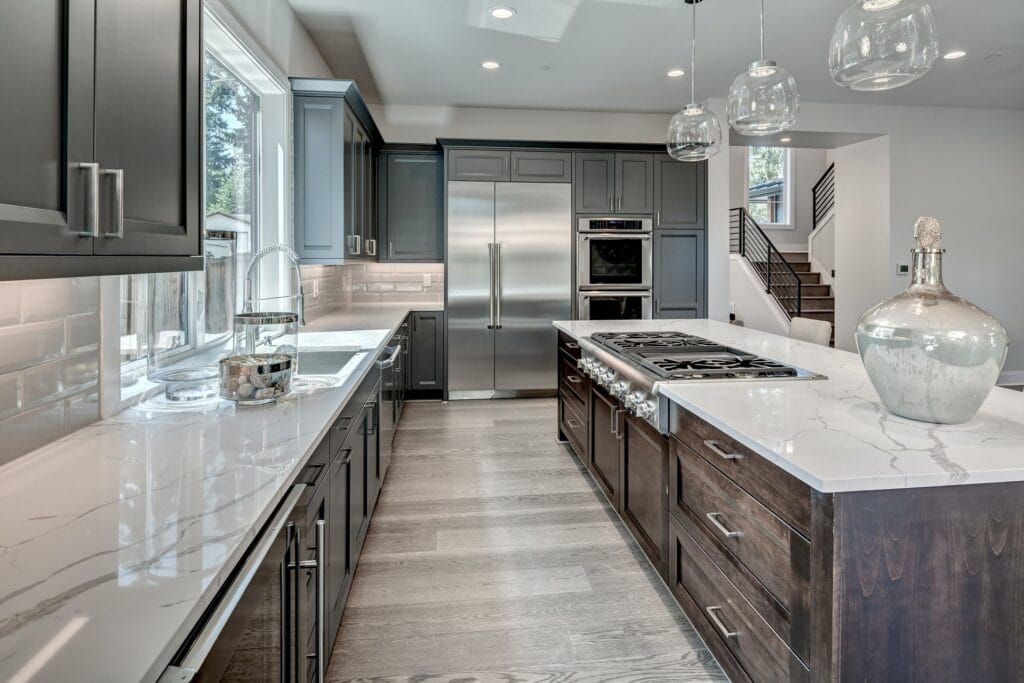
Mistakes to Avoid with a $10,000 Remodel
One of the biggest mistakes homeowners make is trying to do too much. Attempting to replace cabinets, appliances, countertops, flooring, and lighting all at once will spread your budget too thin, leaving each upgrade feeling underwhelming. Instead, focus on fewer projects that deliver maximum impact.
Another common error is prioritizing style over substance. A trendy backsplash won’t fix a dysfunctional layout or poorly working appliances. Always ensure the essentials are addressed before cosmetic flourishes.
It’s also tempting to cut corners on installation to save money, but this often backfires. Poorly installed flooring, countertops, or electrical work can lead to costly repairs down the road.
Lastly, avoid shopping solely on price. The cheapest materials may not hold up to daily wear and tear, which means you’ll be spending more in the long run to replace them. Instead, aim for products that balance affordability with durability.
Strategies to Maximize Your $10K
The smartest way to stretch your budget is to approach your remodel with strategy.
Timing matters. Many homeowners save thousands by shopping during seasonal sales, like Black Friday or Memorial Day, when appliances and materials are heavily discounted. Contractor schedules also slow down in the winter, which can mean lower labor costs.
Phased remodeling is another great strategy. Instead of rushing to do everything at once, focus on the most impactful updates first like painting cabinets and installing new lighting then tackle countertops or flooring in a later budget cycle. This spreads costs out and keeps quality high.
Mixing high and low finishes is another trick designers use. Splurge on visible, high-impact features like countertops or lighting, and save on hidden elements like cabinet interiors.
Finally, always keep a 20% contingency fund. Even small remodels encounter surprises like hidden water damage under old flooring and having that buffer prevents financial stress.
Conclusion
So, is $10,000 enough for a kitchen remodel? The answer is yes if you use it wisely. While you won’t achieve a full luxury transformation, $10K can fund meaningful updates that improve both aesthetics and function. By prioritizing cabinet painting or refacing, affordable countertops, modern lighting, and smart flooring choices, you can create a kitchen that feels entirely renewed without overspending.
The most successful remodels aren’t about doing everything they’re about doing the right things well. With thoughtful planning, smart timing, and quality execution, your $10,000 investment can deliver a kitchen you’ll be proud of for years to come.
At Grand Building Construction, we specialize in helping homeowners maximize their remodeling budgets. Whether your project is modest or large-scale, our team can guide you toward the smartest updates for your goals and lifestyle. Contact us today for a free consultation and discover how far your $10K can go.
FAQs: Kitchen Remodels on a $10,000 Budget
Can I remodel a small kitchen for $10,000?
Yes. In a smaller space, $10,000 can cover cabinet painting or refacing, new countertops, a backsplash, updated lighting, and even flooring.
Is painting cabinets worth it with this budget?
Absolutely. Professional painting costs $2,000–$4,000 and delivers one of the highest visual returns on investment.
Should I reface or replace cabinets with $10,000?
Refacing is the smarter choice. It gives you the look of brand-new cabinets at 30–50% less cost than full replacement.
How do I prioritize projects under $10,000?
Start with cabinets and countertops, since they dominate the kitchen’s appearance. Then allocate remaining funds to lighting, flooring, or one essential appliance.
What mistakes should I avoid on a tight budget?
Don’t overcommit. Focus on fewer, impactful upgrades, avoid ultra-cheap materials, and hire professionals for complex work to prevent costly errors.

